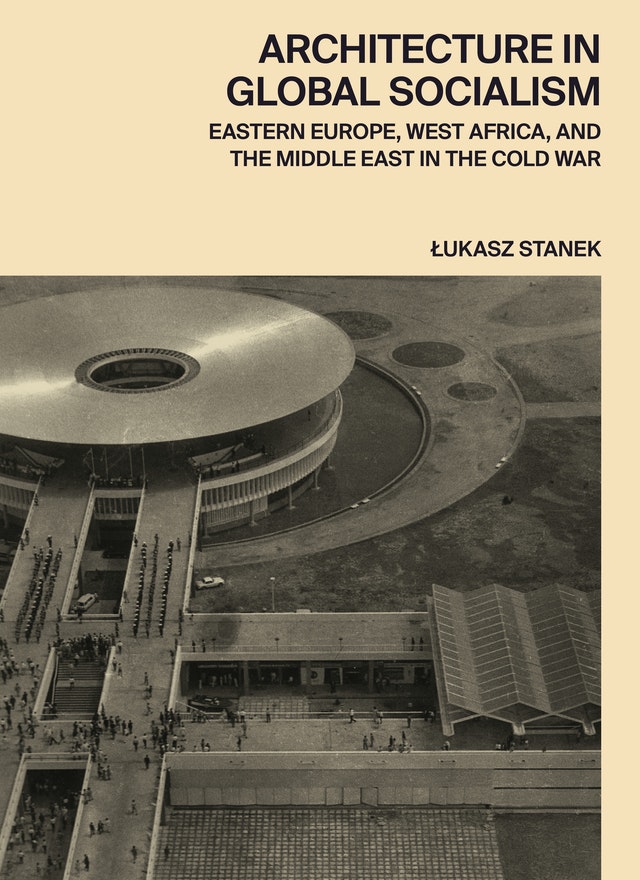Architecture in Global Socialism
Architecture in Global Socialism: Eastern Europe, West Africa, and the Middle East in the Cold WarŁukasz StanekPrinceton University Press, January 2020Hardcover | 8 x 11 inches | 368 pages | 277 illustrations | English | ISBN: 978-0691168708 | $60.00PUBLISHER'S DESCRIPTION: In the course of the Cold War, architects, planners, and construction companies from socialist Eastern Europe engaged in a vibrant collaboration with those in West Africa and the Middle East in order to bring modernization to the developing world. Architecture in Global Socialism shows how their collaboration reshaped five cities in the Global South: Accra, Lagos, Baghdad, Abu Dhabi, and Kuwait City. Łukasz Stanek describes how local authorities and professionals in these cities drew on Soviet prefabrication systems, Hungarian and Polish planning methods, Yugoslav and Bulgarian construction materials, Romanian and East German standard designs, and manual laborers from across Eastern Europe. He explores how the socialist development path was adapted to tropical conditions in Ghana in the 1960s, and how Eastern European architectural traditions were given new life in 1970s Nigeria. He looks at how the differences between socialist foreign trade and the emerging global construction market were exploited in the Middle East in the closing decades of the Cold War. Stanek demonstrates how these and other practices of global cooperation by socialist countries—what he calls socialist worldmaking—left their enduring mark on urban landscapes in the postcolonial world. Featuring an extensive collection of previously unpublished images, Architecture in Global Socialism draws on original archival research on four continents and a wealth of in-depth interviews. This incisive book presents a new understanding of global urbanization and its architecture through the lens of socialist internationalism, challenging long-held notions about modernization and development in the Global South. Łukasz Stanek is senior lecturer at the Manchester School of Architecture, University of Manchester, UK. He is the author of Henri Lefebvre on Space: Architecture, Urban Research, and the Production of Theory and the editor of Team 10 East: Revisionist Architecture in Real Existing Modernism. REFERRAL LINKS: dDAB COMMENTARY: Images of the aftermath of the August 4th blast at the port in Beirut showed an area completely flattened, minus one structure: a badly damaged concrete grain silo. Later stories revealed that the industrial structure was built in the late 1960s by the Czech company Prumstav. This apparently minor fact hinted at cooperations in the Cold War years between then-Socialist countries in the north and countries in what is now called the Global South. Although neither this structure nor Beirut is found in Łukasz Stanek's Architecture in Global Socialism, his book explores just that terrain: the involvement of architects and planners from Eastern Bloc countries in the physical development of decolonized countries in Africa and the Middle East after World War II. Architecture in Global Socialism is an impressive document that is the culmination of many years Stanek has focused on intercontinental cooperation. I was first exposed to his approach with the 2012 book Postmodernism Is Almost All Right: Polish Architecture After Socialist Globalization, which came out of PRL™ Export Architecture and Urbanism From Socialist Poland, an exhibition at the Museum of Technology in Warsaw in 2010. As I wrote in my review of the book, "Polish architects were sought after to work in these contexts [Algeria, Iran, Kuwait, etc.], and they treated the opportunities as means of formal and urban experimentation that would eventually be imported back home." While the earlier book is a heavily illustrated and focused on the form of buildings (all PoMo, as the title implies) and how they fit into their context, the new book is a deep, thoroughly researched history of architectural mobilities and "worldmaking" during the Cold War. Stanek's subject is complex, to say the least, but he focuses on a handful of places to trace a triangular trajectory between Eastern Europe, West Africa, and the Middle East. These cities are Accra, Lagos, Baghdad, Abu Dhabi, and Kuwait City. Outside of the last two, which are grouped together, each city is given its own chapter, with Stanek using interviews, studies, and firsthand visits to tell the stories of notable architects, buildings, and master plans. For me, an American architect educated in highly biased Western histories of architecture, the book is one surprise after another. This is hardly a shock. After all, Stanek writes in the introduction that the engagements of Eastern European architects in the Global South "have been almost completely written out of Western-based historiography of architecture," a "blind spot" his book serves to fill. One standout surprise is the work of Polish architect and scholar Zbigniew Dmochowsk

Architecture in Global Socialism: Eastern Europe, West Africa, and the Middle East in the Cold War
Łukasz Stanek
Princeton University Press, January 2020
Hardcover | 8 x 11 inches | 368 pages | 277 illustrations | English | ISBN: 978-0691168708 | $60.00
PUBLISHER'S DESCRIPTION:
REFERRAL LINKS:
SPREADS:









